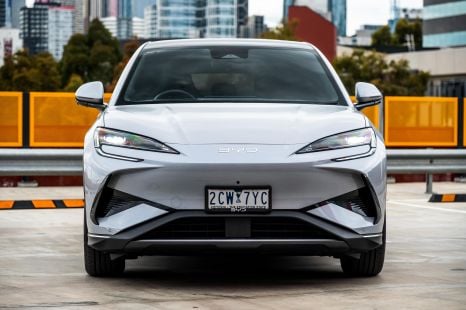

James Wong
2026 BYD Sealion 7 review
1 Hour Ago

Founder
We’re hearing a lot in the media at the moment about the disdain some people have toward pickup trucks. So, I wanted to get a feel for what life was like in a ‘big’ American pickup truck.
I tracked down one of the biggest ones I could fit at my apartment building car park to see what it’s actually like to live with in and around the suburbs and out in the country.
I ended up in a 2024 Ford F-150 Lariat long wheelbase. It measures in at 6184mm long – it’s almost a metre longer than a Toyota HiLux and around 1.2 metres longer than a Toyota Kluger. Importantly though, it’s conveniently just under two metres in height, meaning it fits into most underground car parks.
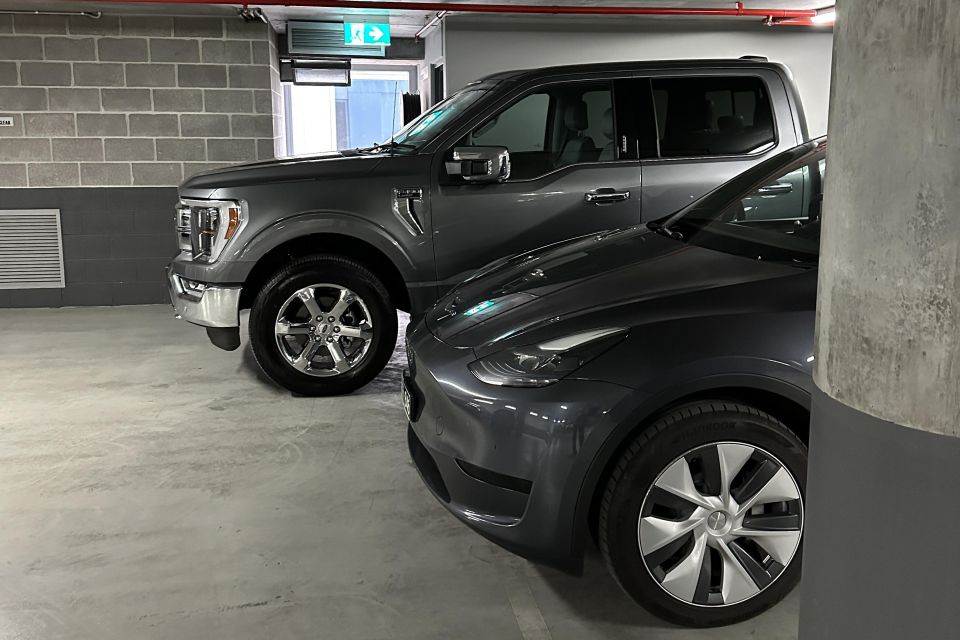
To put this category into context, when it came to new car sales last year, over 600,000 of the over 1 million new cars sold were SUVs. The next biggest category of vehicles was pickup trucks, which accounted for around 250,000 sales.
The balance of new car sales were all other vehicle types – such as small vehicles, sedans and anything that wasn’t an SUV or a pickup truck.
Further to those figures, the three best-selling vehicles in the country last year were the Ford Ranger, Toyota HiLux and Isuzu D-Max – all pickup trucks.
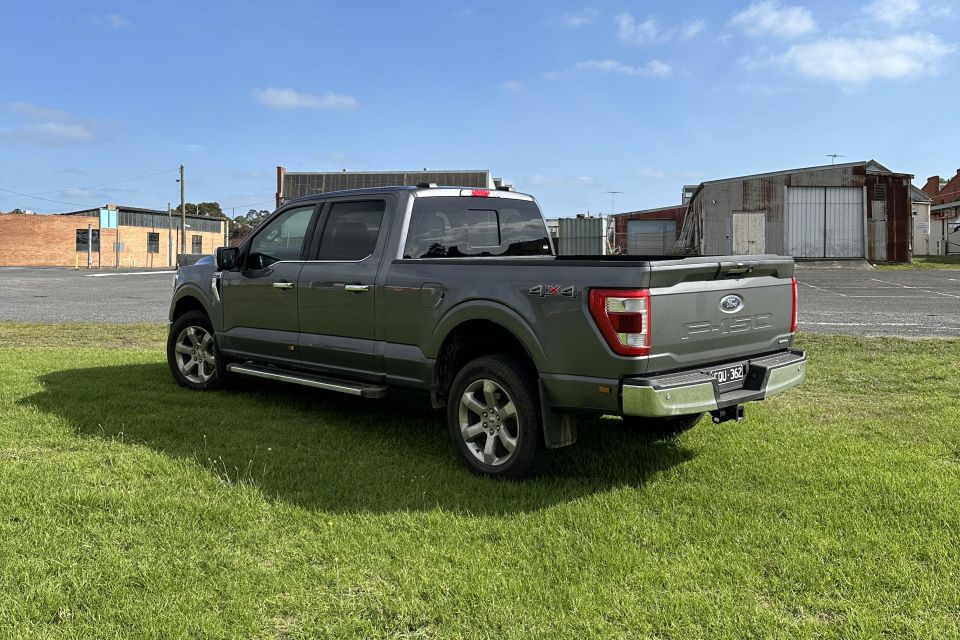
If you exclude all the ‘small’ pickup trucks (like the Ranger, HiLux and D-Max) and only focus on the larger ones like the Ford F-150, Ram 1500, Chevrolet Silverado and Toyota Tundra, demand for these types of vehicles has exploded over the past five years.
Between 2018 and 2023 sales have increased from under 1000 units per year to over 10,000 units per year – an increase of 1333 per cent. And, that’s with just two brands namely available during that period (Ram’s range of 1500, 2500 and 3500 and the Chevrolet Silverado 1500 and HD range).
These nameplates have now expanded to include the Ford F-150 and Toyota Tundra, both of which will have sales added to the above tally from 2024 onwards. So it’s fair to say demand and interest in these vehicles has increased (despite how much people want to hate them).
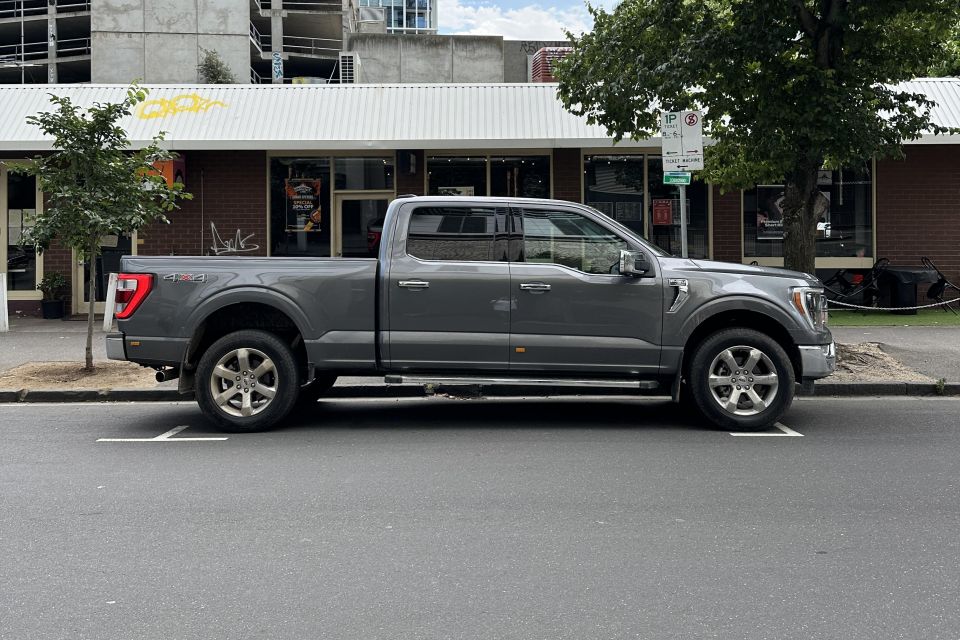
Before I get into my experience with the F-150 Lariat LWB (long wheelbase), why are people buying them? Well, to start with, they’re some of the few vehicles on the market that will tow 4500kg or more with a braked trailer without needing significant hardware changes.
They’re also significantly more spacious inside, come with more powerful engines for easier towing and also have more features in comparison to the ‘smaller’ utes that dominate the sales charts.
So, what’s a vehicle like this like to drive? Being on a longer wheelbase (3994mm) for the LWB version – all your turns need to be wider and you can imagine how much extra care was required for things like u-turns and climbing levels of a narrow apartment building car park.
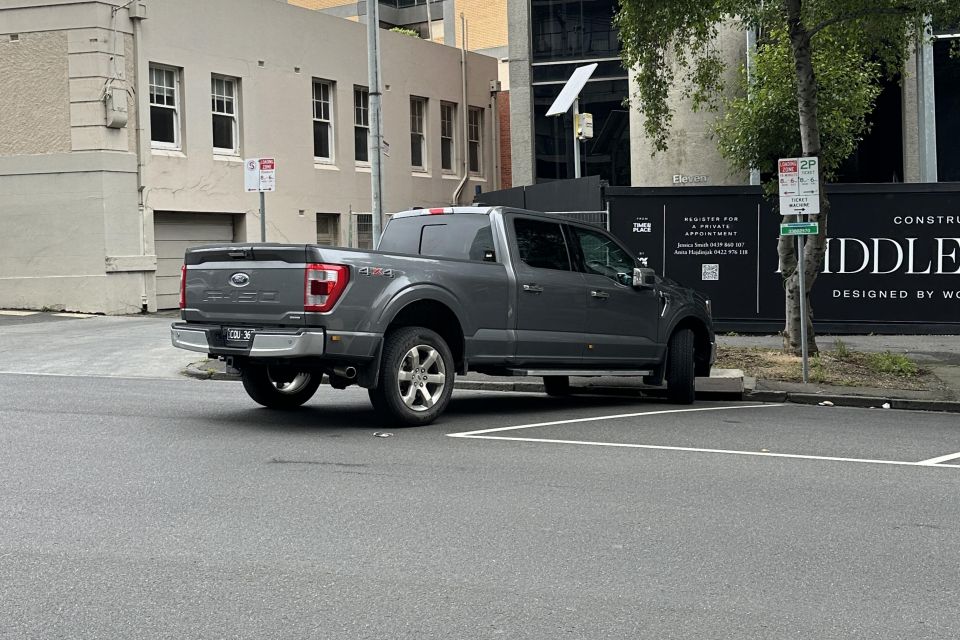
You also need to account for our undersized parking spaces – the standards call for spaces that are 5.4m in length and 2.4m in width. They’re undersized because of the majority of the top 10 selling cars in Australia in 2023, they measured at or very near 5.4m in length. These standards came about when people were buying much smaller cars
That means pickup trucks are harder to park, harder to move between and harder to open/close doors and trays at the rear of. Thankfully, Standards Australia is in the process of assessing the adjustment of parking bay sizes to 5.6m in length, buying a much needed 200mm in length.
So you can picture how this goes down when you’re trying to park in suburbia. You need to pick the first or last of parking spaces to adequately fit the vehicle (they’re often oversized to fit between driveways) and if you reverse into a park the vehicle will typically stick out of the parking bay.
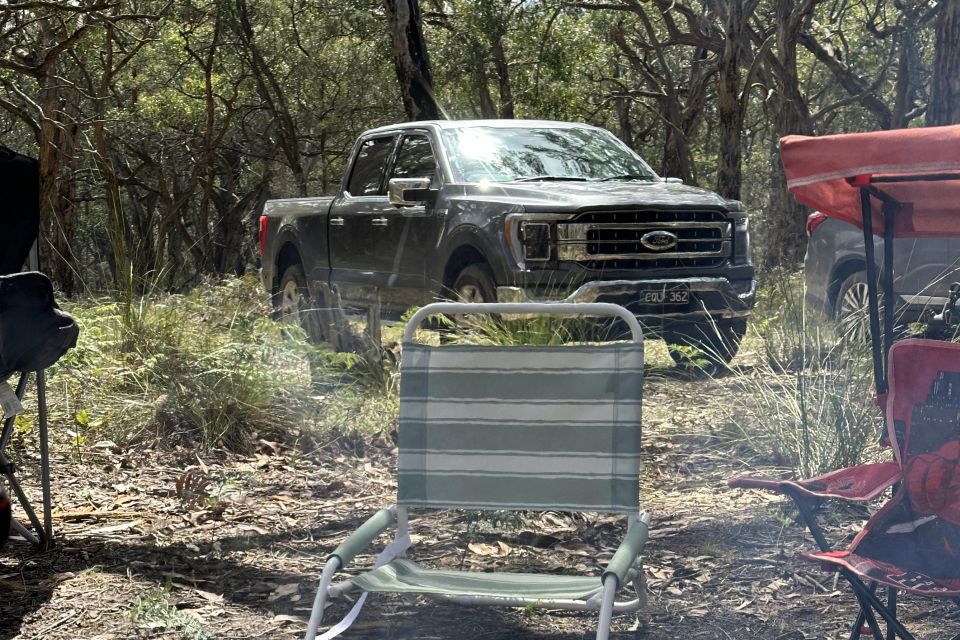
In terms of the physical art of parking the vehicle, it’s no harder to park than any other vehicle with parking sensors and a 360 degree reverse-view camera. It’s only marginally wider than something like a Toyota Kluger, so outside of its length, it doesn’t take that much more room in an adequately sized parking space.
But – most people that buy these won’t live in the CBD or live in an apartment building (it was fine to drive in and out of the building and park, by the way). They’ll be hitting the road for a long-distance drive or to tow a large trailer.
I did the same thing – I did a couple of longer distance country drives with a load in the tray. I also towed a larger trailer using the larger 70mm tow ball. Both were effortless feats – all of the big American pickup trucks have decent engines that make moving loads like this a piece of cake.
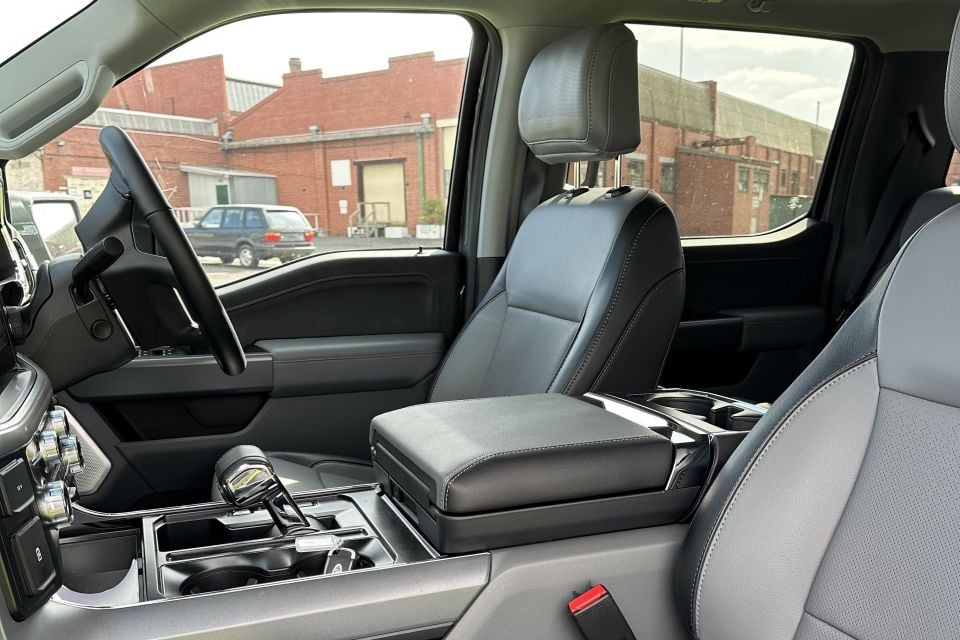
The Ram range uses naturally aspirated V8s in the entry-level 1500 and they progressively step up to big-torque Cummins turbocharged diesels in the 2500 and 3500. Likewise the Silverado range – it goes from petrol V8 in the 1500 to a bigger diesel engine as you move into the heavy duty range.
Driving on the freeway was a piece of cake and supremely comfortable. Despite the somewhat agricultural leaf spring rear suspension setup, it rode incredibly well over potholed terrain and felt as comfortable as any other large SUV chewing up the miles.
Most appealing though was the room inside and the versatility. The second row is incredibly spacious and big enough to easily sit three adults side-by-side, there’s an enormous centre console and storage beneath the second row.
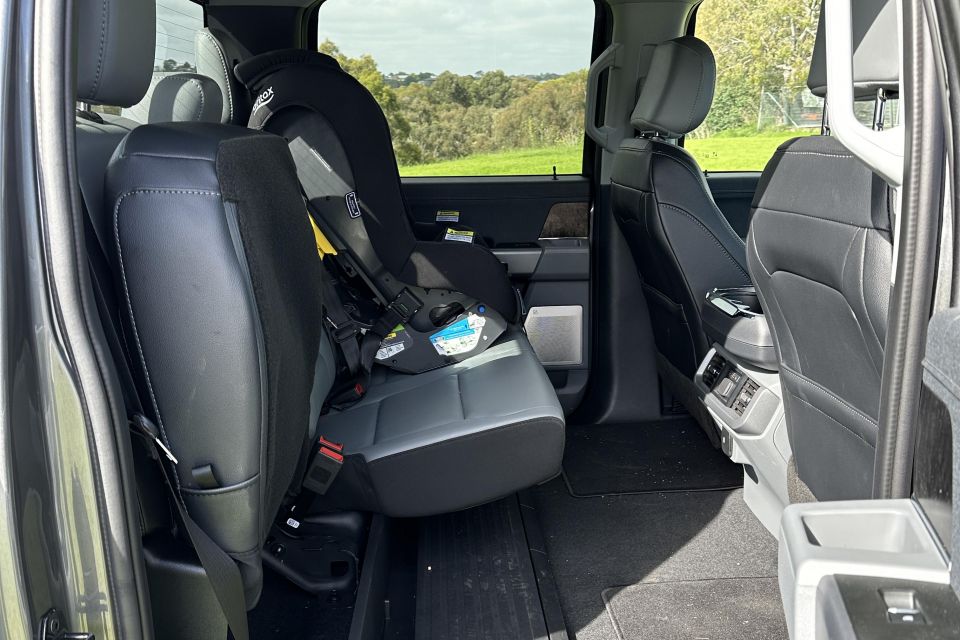
The second row floor is also flat, which means you can load large items sideways through the vehicle without them being tilted into the air.
But it wasn’t all smooth sailing. What I found most fascinating was how upset some people got at the thought of the vehicle existing and being around them, along with the assumption that the person driving it is driving it because they want to annoy other drivers on the road.
The glares from onlookers were paired with one older Tesla-driving bloke asking “do you really need to be driving that thing? Do you know how much damage that does to the roads?”, as if I needed a signed permission slip from him to pick the car I wanted to drive.
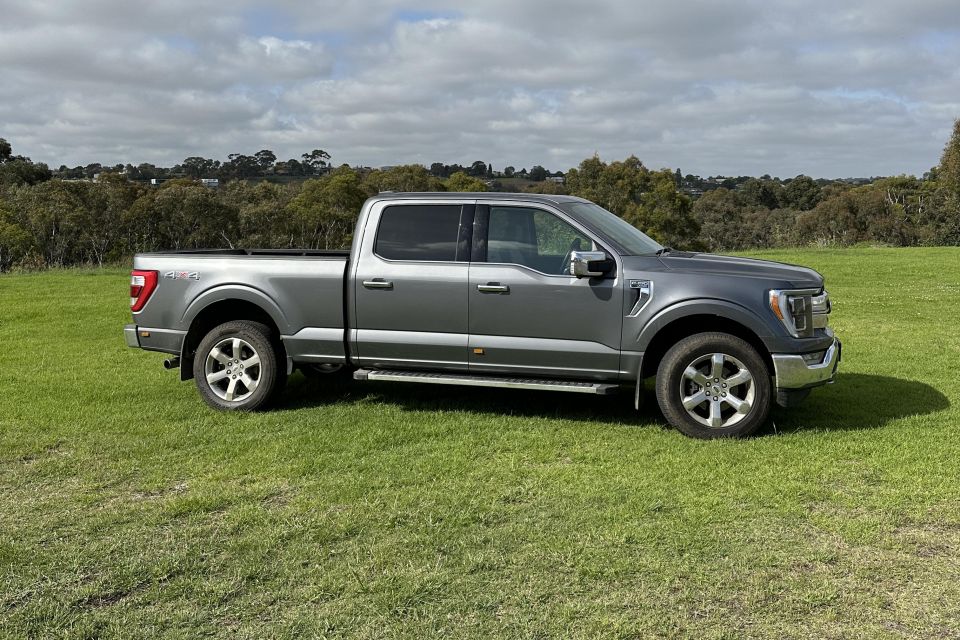
I did want to entertain his comment on the damage to the roads, which I presume he thought came from the vehicle’s mass. And I specifically wanted to compare it to the car he was driving: a Tesla Model Y.
A quick search showed that a mid-spec Tesla Model Y Long Range actually weighs around as much as a mid-spec Toyota HiLux SR5. But, it gets even worse if you step up to a seven-seat electric vehicle like the Mercedes-Benz EQS SUV or the new Kia EV9.
The respective top-spec variants tip the scales at an eye watering 2918kg and 2636kg respectively. For the record, the F-150 isn’t a lightweight either, so there was some truth in his comment, as it kicks off from 2451kg kerb weight in base trim and goes all the way up to 2555kg kerb weight in top spec Lariat LWB trim.
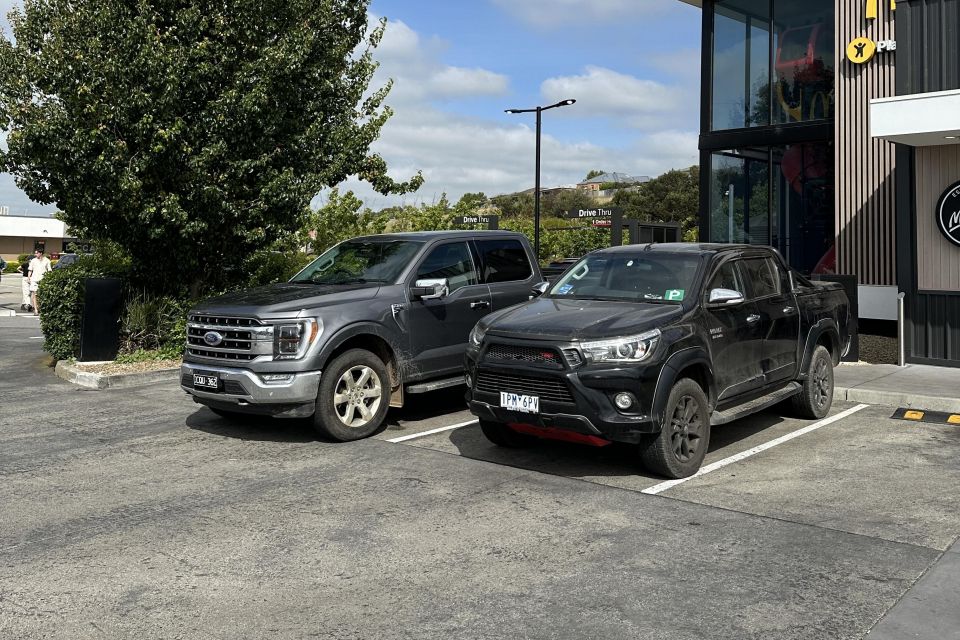
With the direction EVs are heading in (with EV SUV sales being the primary driver of the switch to EVs) it’s a fact road designers and road users will need to come to terms with.
Anyway, my overall positive experience was slightly soured by the Tesla driver. But not enough to come away not loving my time in the F-150 (and every other rival American pickup I’ve had the chance to test).
Given so many Australians are buying pickup trucks and there is a clear explosion in demand for the bigger American pickup trucks, we should be embracing them and creating parking spaces and roads that suit the types of vehicles people buy and not succumbing to the vocal woke minority that think everything is about them and are happy to offer an opinion when one isn’t requested.
MORE: Everything Ford F-150 MORE: 2024 Ford F-150 review
Where expert car reviews meet expert car buying – CarExpert gives you trusted advice, personalised service and real savings on your next new car.
Paul Maric is a CarExpert co-founder and YouTube host, combining engineering expertise with two decades in automotive journalism.


James Wong
1 Hour Ago
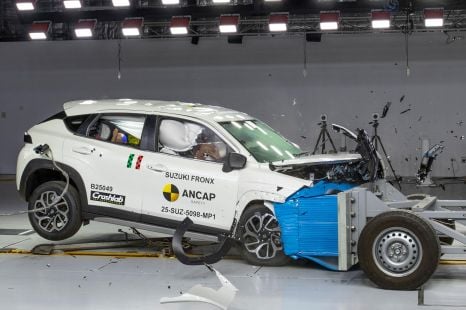

Damion Smy
10 Hours Ago
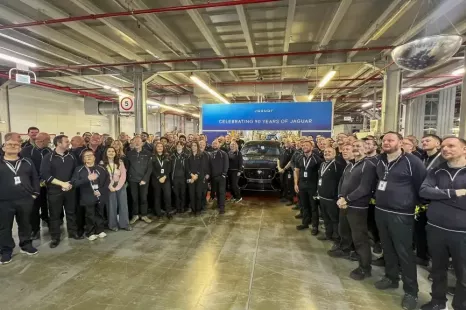

Damion Smy
13 Hours Ago
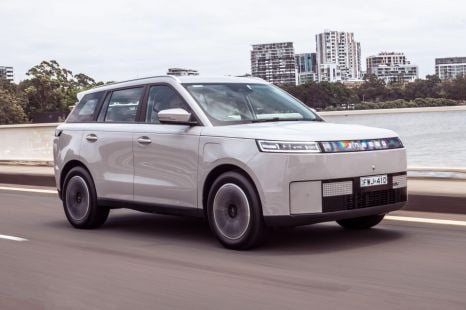

Josh Nevett
15 Hours Ago
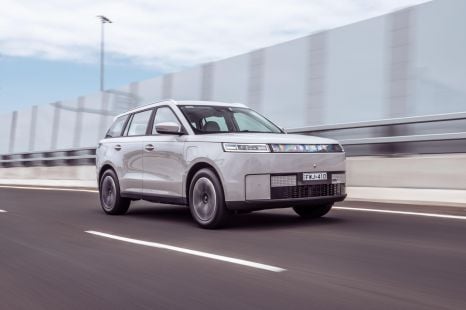

Josh Nevett
15 Hours Ago
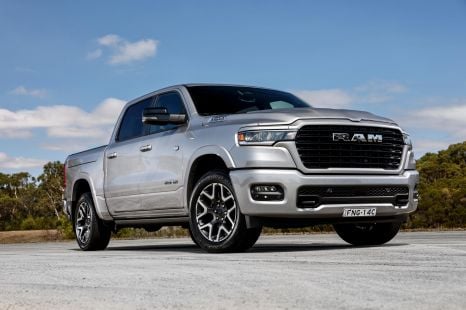

Damion Smy
16 Hours Ago